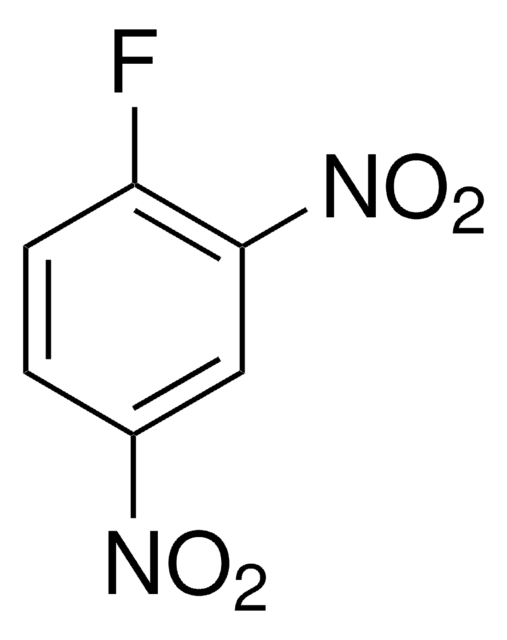C5913
4-Chloromercuribenzoic acid
cysteine active site modifier
Sinónimos:
4-(Chloromercurio)benzoic acid, 4-(Hydroxymercuri)benzoic acid
About This Item
Productos recomendados
descripción
cysteine active site modifier
Ensayo
≥98.5% (HPLC)
Formulario
powder
mp
287 °C (dec.) (lit.)
solubilidad
1 M NaOH: 20 mg/mL, clear, colorless
cadena SMILES
OC(=O)c1ccc([Hg]Cl)cc1
InChI
1S/C7H5O2.ClH.Hg/c8-7(9)6-4-2-1-3-5-6;;/h2-5H,(H,8,9);1H;/q;;+1/p-1
Clave InChI
YFZOUMNUDGGHIW-UHFFFAOYSA-M
¿Está buscando productos similares? Visita Guía de comparación de productos
Aplicación
Cláusula de descargo de responsabilidad

Palabra de señalización
Danger
Frases de peligro
Consejos de prudencia
Clasificaciones de peligro
Acute Tox. 1 Dermal - Acute Tox. 2 Inhalation - Acute Tox. 2 Oral - Aquatic Acute 1 - Aquatic Chronic 1 - STOT RE 2
Código de clase de almacenamiento
6.1A - Combustible acute toxic Cat. 1 and 2 / very toxic hazardous materials
Clase de riesgo para el agua (WGK)
WGK 3
Punto de inflamabilidad (°F)
Not applicable
Punto de inflamabilidad (°C)
Not applicable
Listados normativos
Los listados normativos se proporcionan para los productos químicos principalmente. Para los productos no químicos sólo se puede proporcionar información limitada. Si no hay ninguna entrada, significa que ninguno de los componentes está en la lista. Es obligación del usuario garantizar el uso seguro y legal del producto.
EU REACH Annex XVII (Restriction List)
Elija entre una de las versiones más recientes:
¿Ya tiene este producto?
Encuentre la documentación para los productos que ha comprado recientemente en la Biblioteca de documentos.
Los clientes también vieron
Artículos
Biofiles reviews innovative technologies for cancer research, reflecting the complexity of the disease.
Cancer research innovations address the complexity of the disease, providing advanced technologies for varied applications.
Filtros activos
Nuestro equipo de científicos tiene experiencia en todas las áreas de investigación: Ciencias de la vida, Ciencia de los materiales, Síntesis química, Cromatografía, Analítica y muchas otras.
Póngase en contacto con el Servicio técnico












